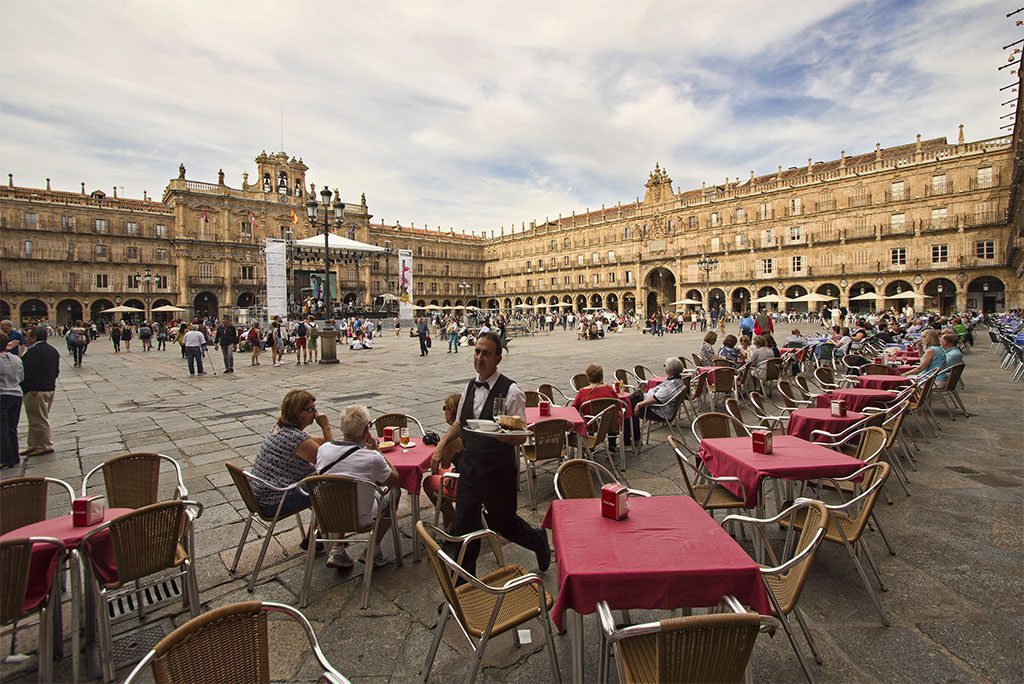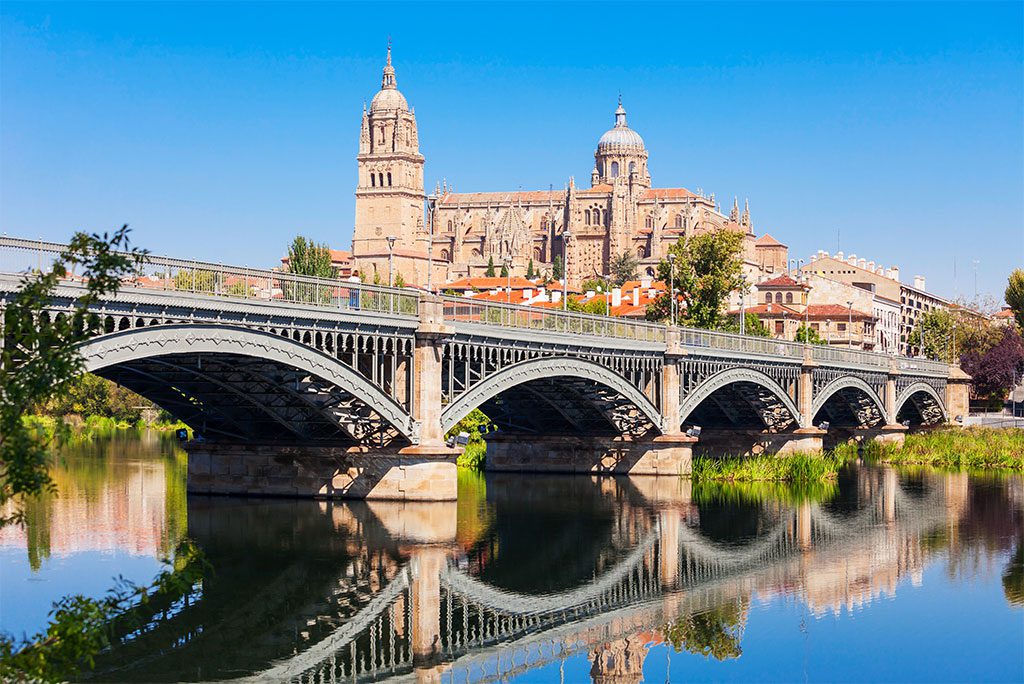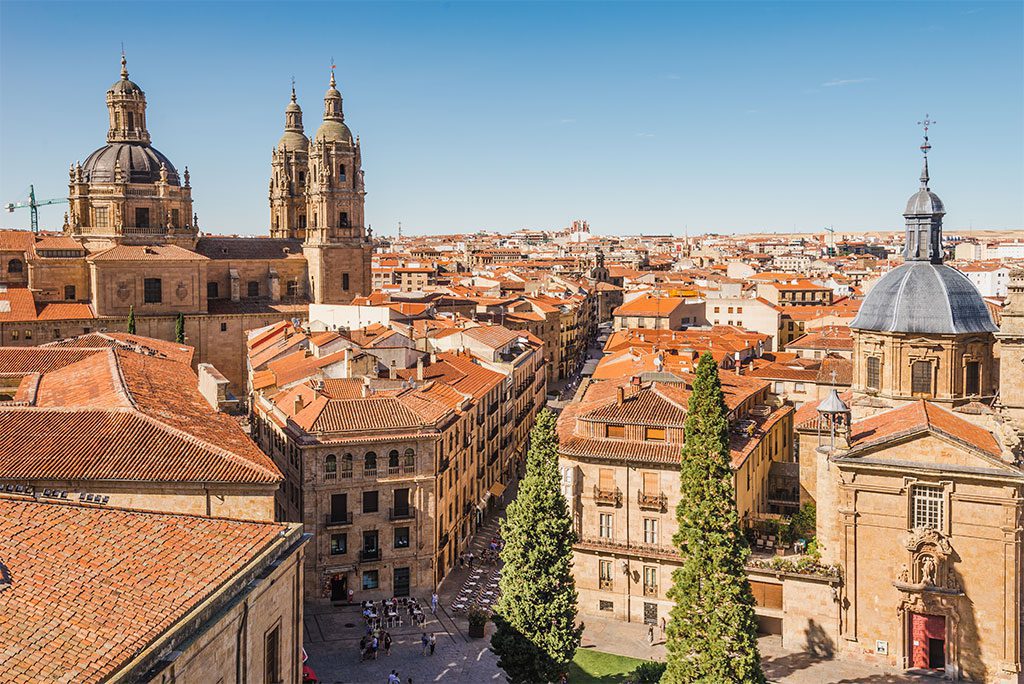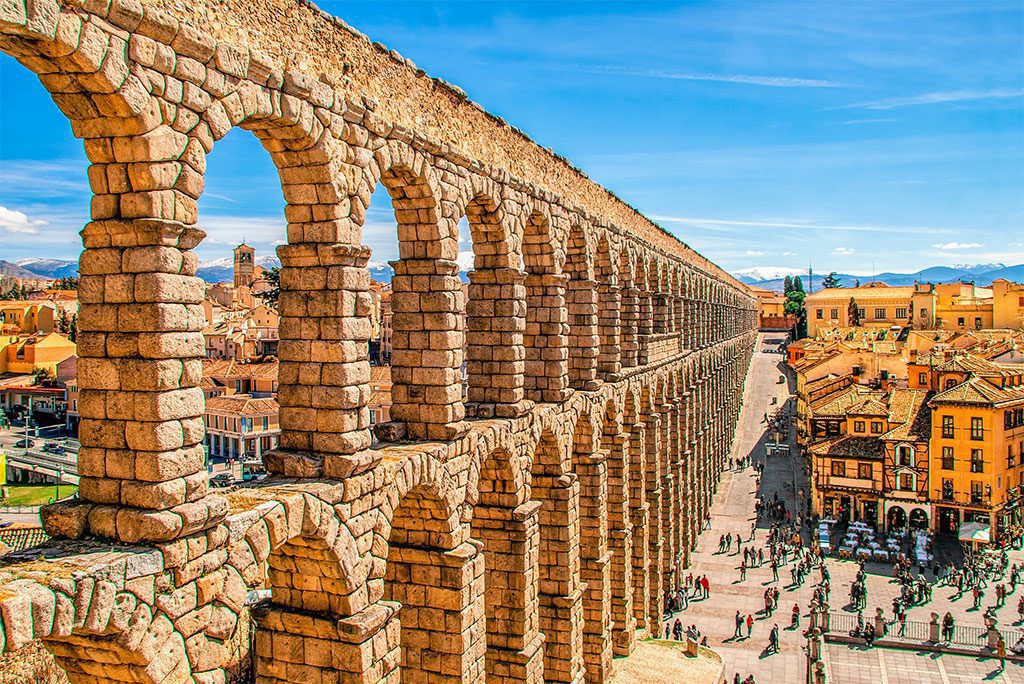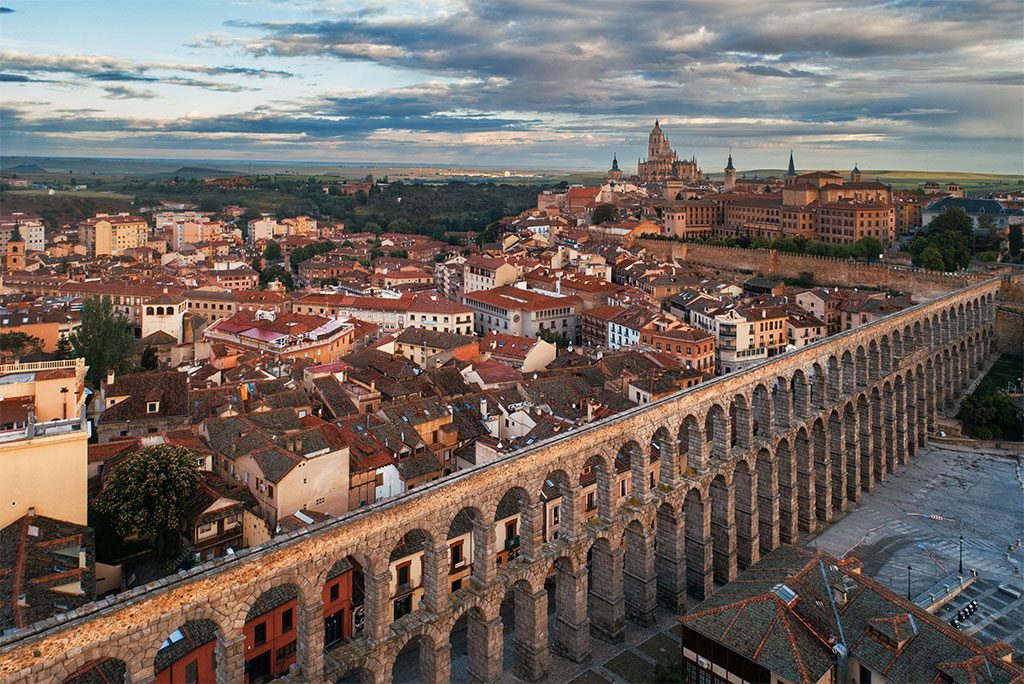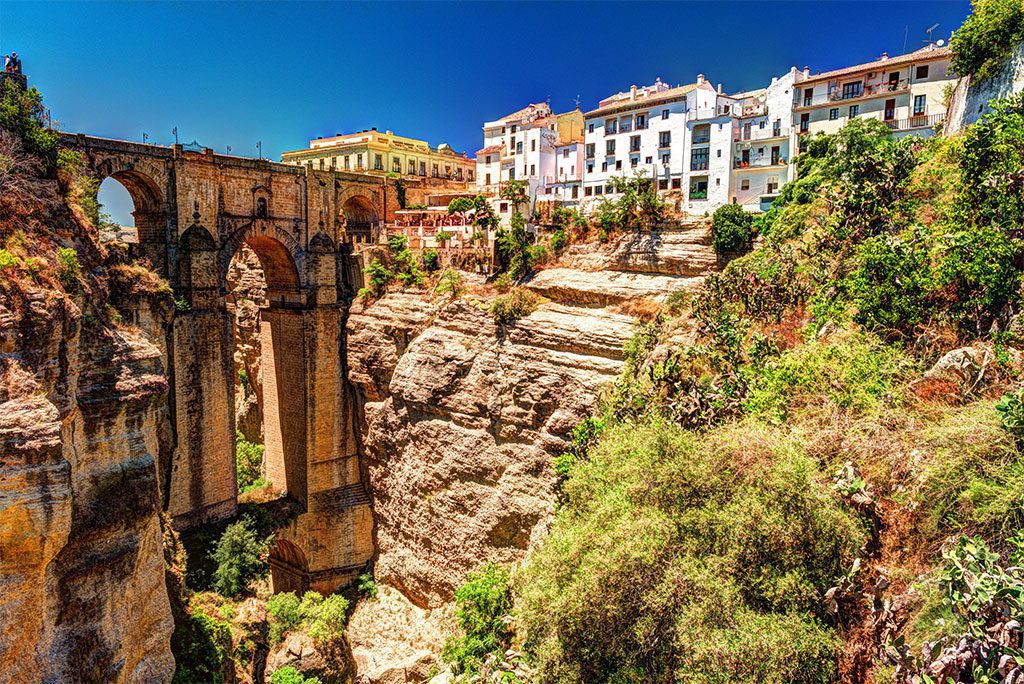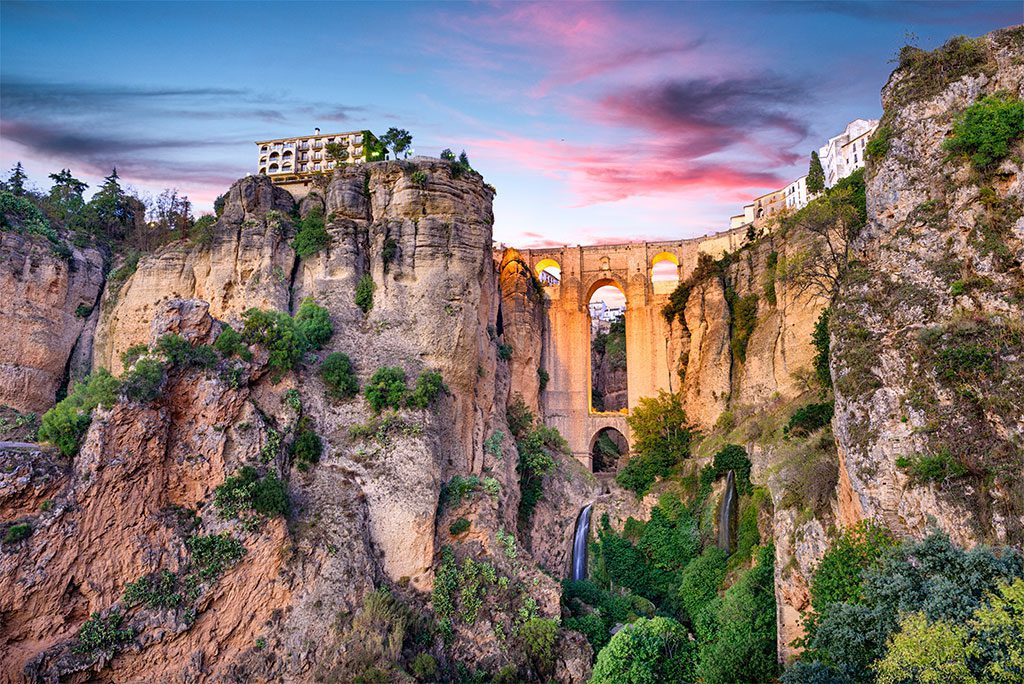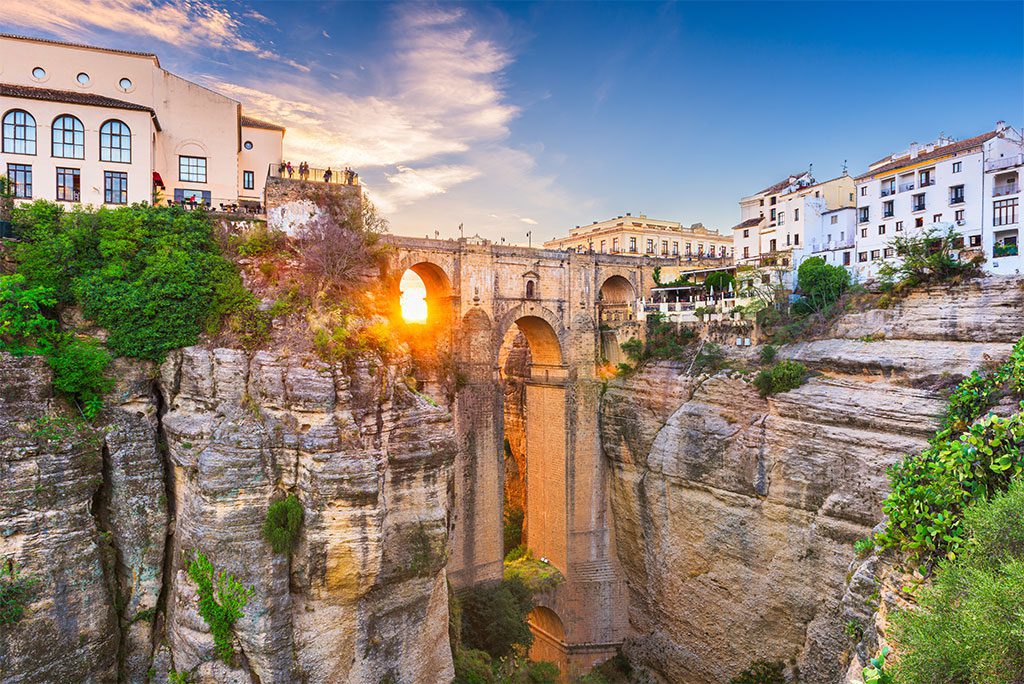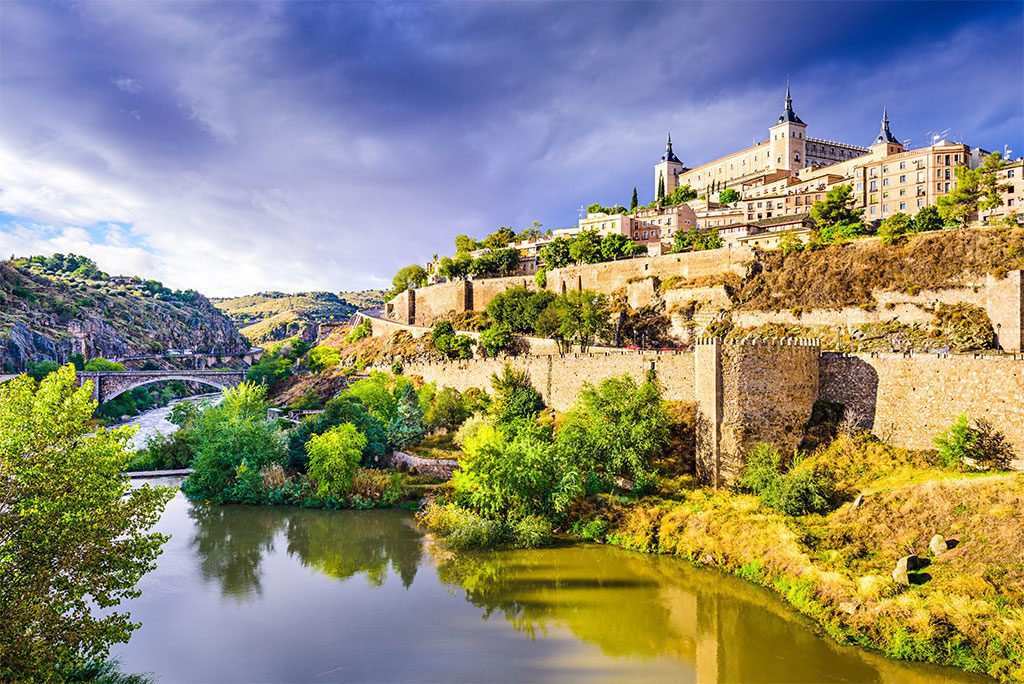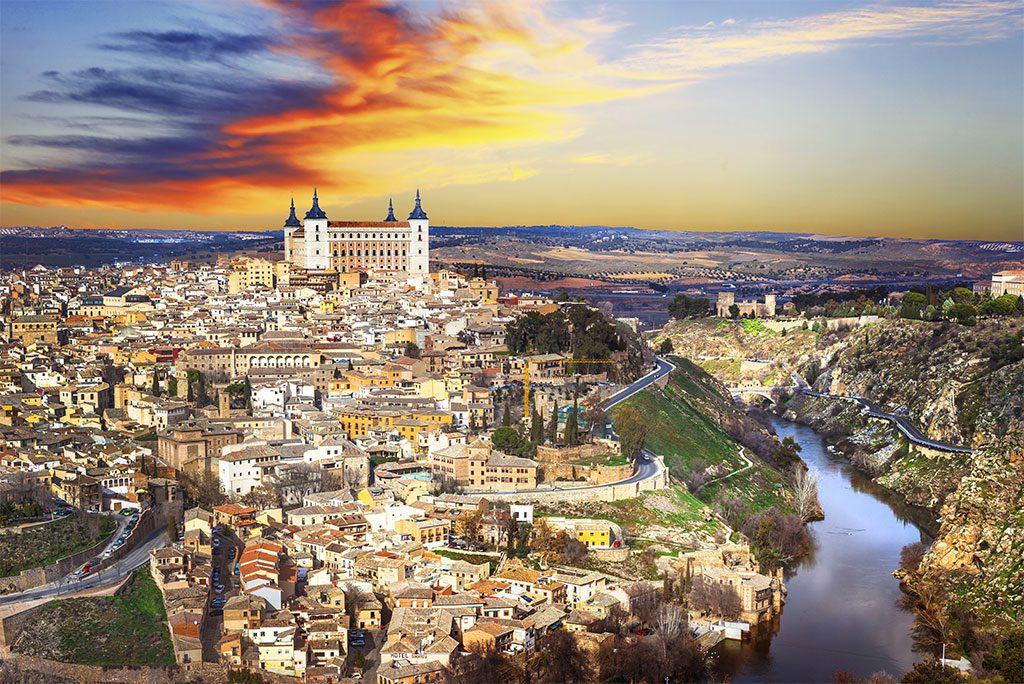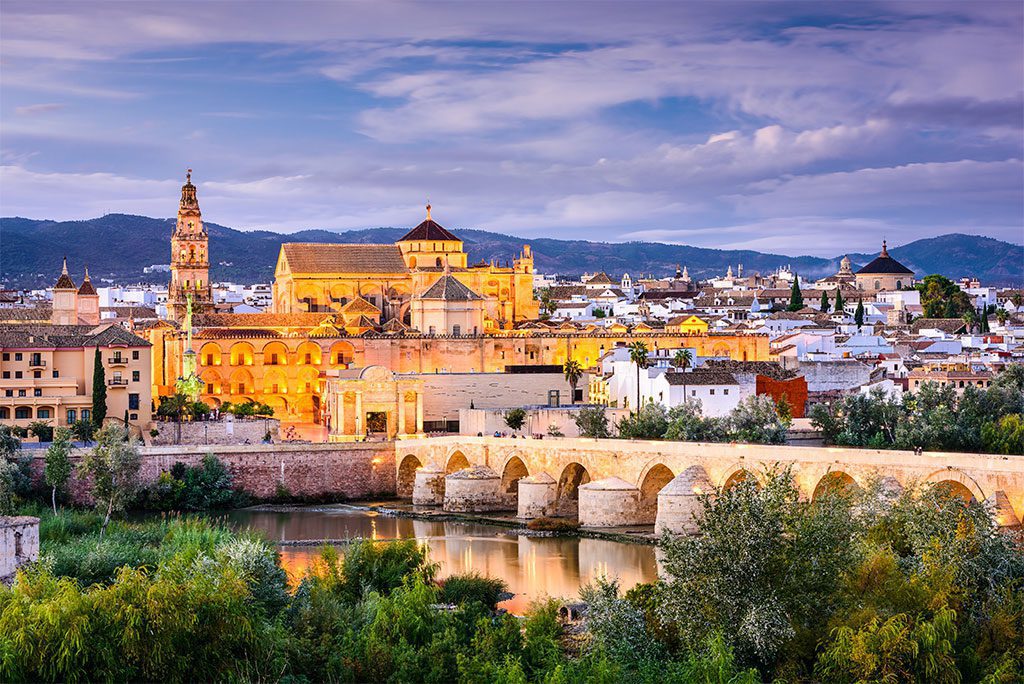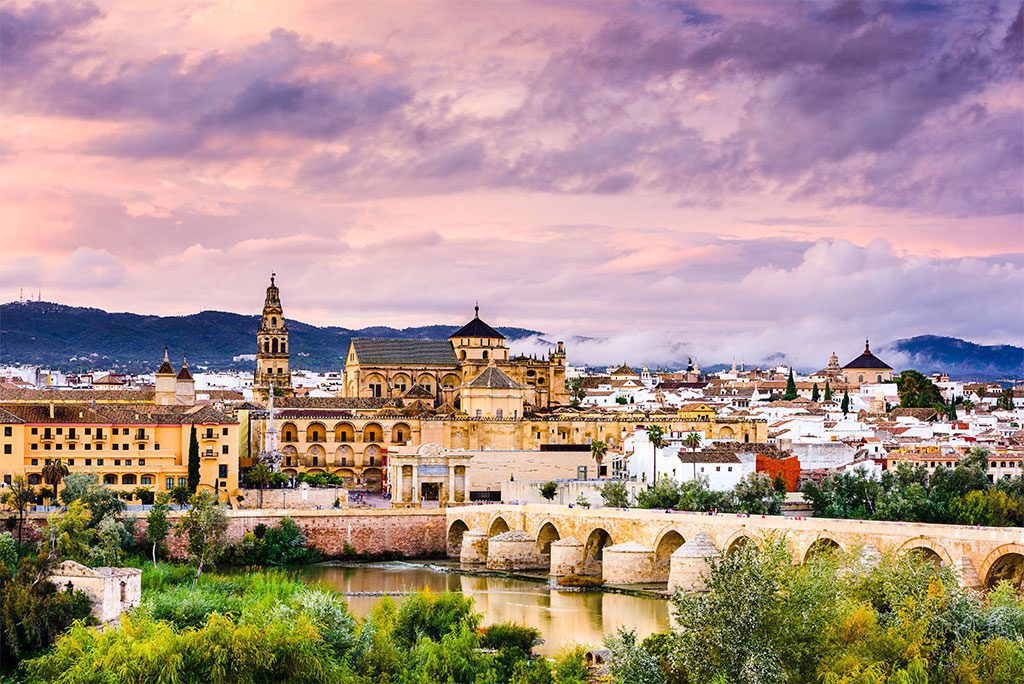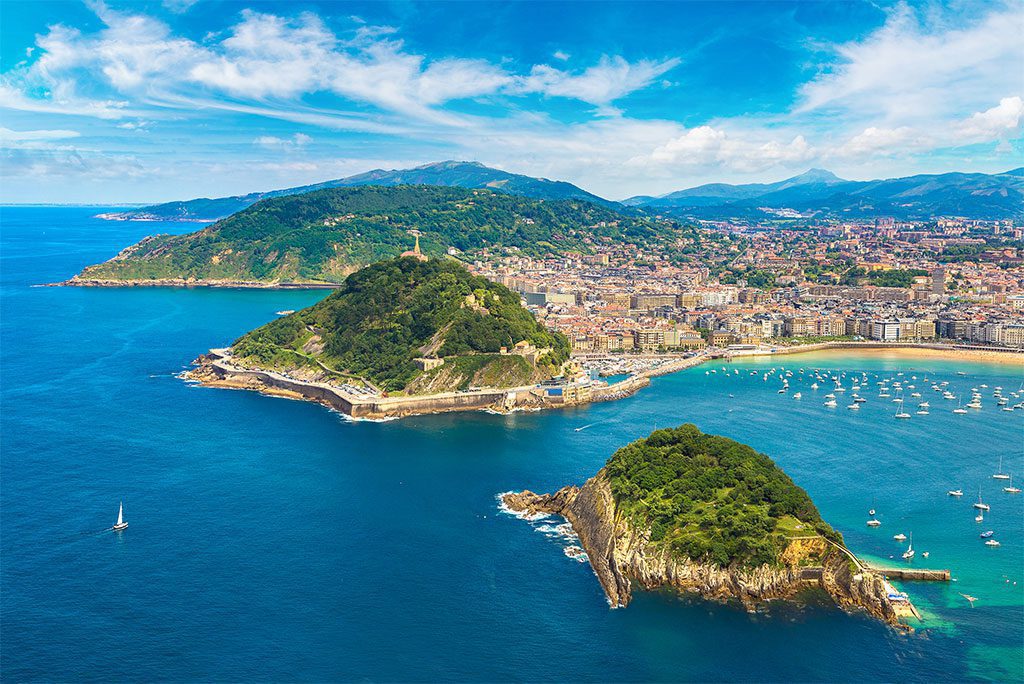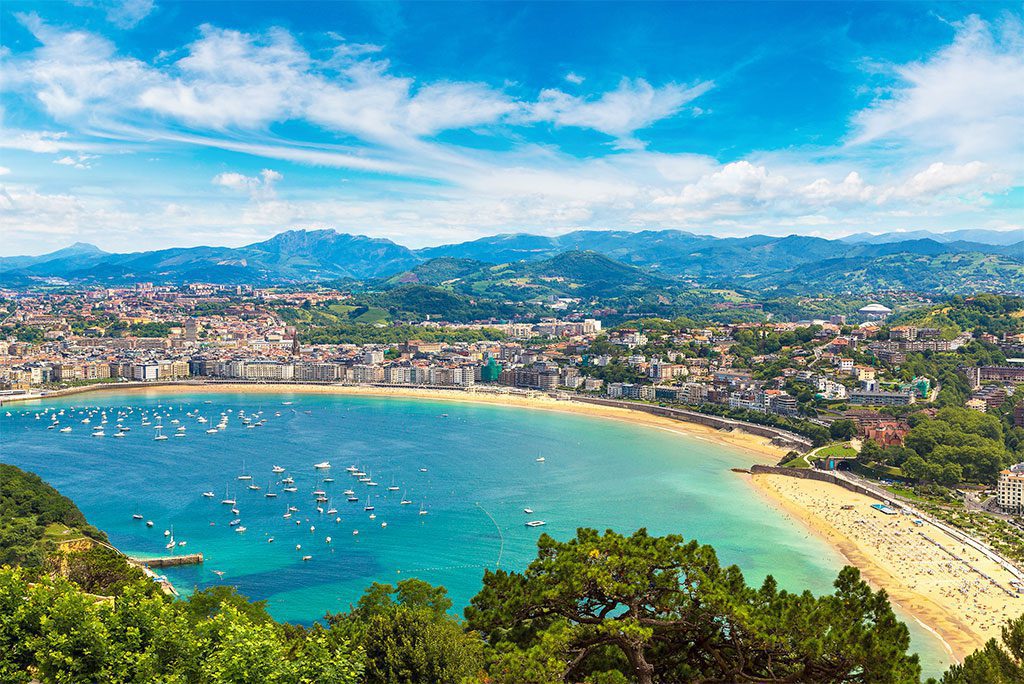Spaniards may experience a wider range of landscapes and climates than you would expect just by looking at their borders. Despite the fact that both paella and bullfighting are often associated with Spain, none of these activities really characterize the Iberian nation. In Spain, you’ll be able to see a vast variety of cultures. Barcelona is a great place to learn about Catalan culture and see some of Antoni Gaud’s most beautiful structures. Check out the Basque version of tapas, pintxos, in the northwest and the Moorish architectural legacy in Andalusia in the south.
In addition, there’s a lot more to explore. The Costas, with their world-famous beaches, needn’t even be mentioned. In addition, there are other magnificent Roman remnants around the nation, such as the aqueduct in Segovia. History, fine dining, and a generous dose of sunshine are all on the menu. Our list of the top locations to visit in Spain will help you plan your trip to this fantastic Mediterranean tourist destination.
17. Merida
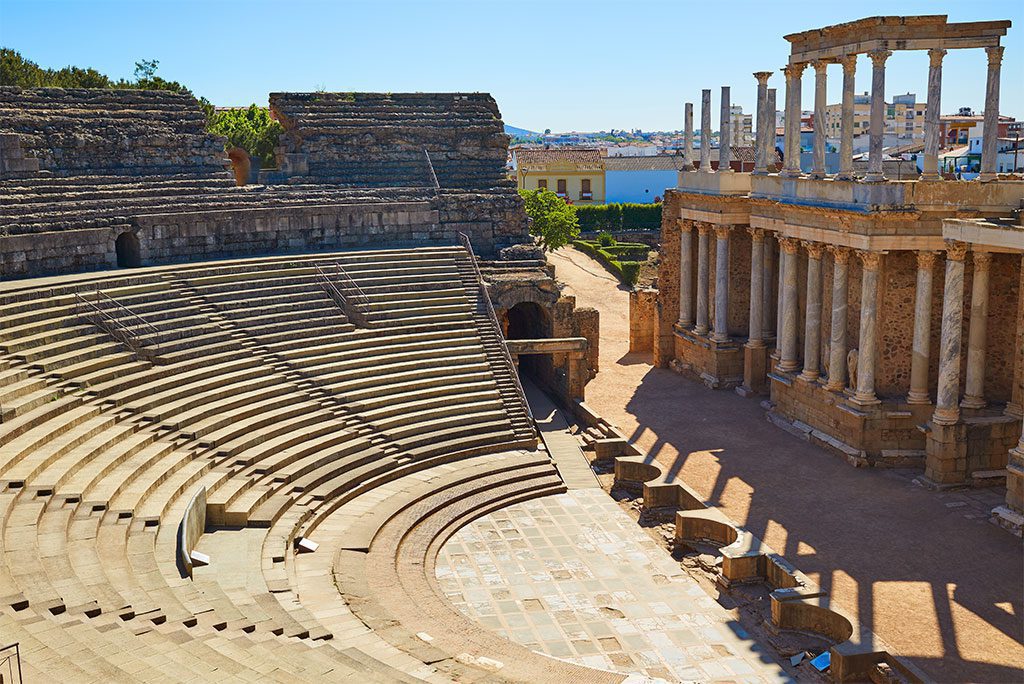
Merida, which the Romans founded in 25 AD, is home to some of Spain’s most remarkable, large, and well-preserved archaeological sites. The city, which is now the seat of the Extremadura Autonomous Community, is located in western-central Spain, between the Guadiana and the Albarregas rivers.
Ancient ruins and historical landmarks may be found all across the city, which dates back over 2,000 years. The Roman Theatre, which still hosts flamenco dances and theatre shows, is one of the must-sees on this list.
A magnificent Moorish fortification, as well as an impressively well-preserved archaeological site from the Roman period—the hippodrome—are also on display. There are also a number of beautiful Baroque and Gothic churches spread around the city, along with a number of fascinating and educational museums that chronicle the city’s rich past.
16. Bilbao
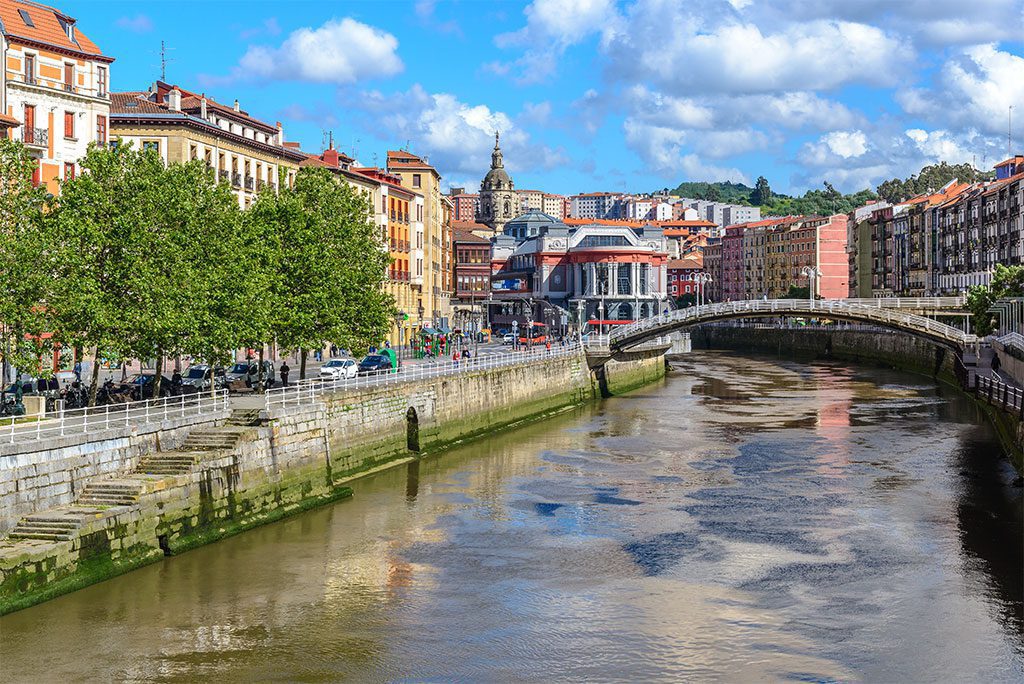
Bilbao, the capital of the Basque Country, is located on an estuary 16 kilometres from the Bay of Biscay, making it the biggest city in the region. Due to its moderate and moist environment, the city’s parks and riverbanks are lush and green, as are the undulating hills around them.
Before the Guggenheim Museum was built in the 1990s, Bilbao was best known as a northern Spanish seaport and industrial city. Following this surge in tourism, Vizcaya’s capital city has become a famous tourist destination thanks to its numerous hidden beauties, which have been rediscovered and revitalized over the years.
Bilbao’s Guggenheim Museum, hailed as one of the most significant pieces of modern architecture, is now a beacon for the whole city. An abstract sculpture that looks like ship outlines and shimmering fish scales decorates this huge complex of buildings that are all connected. It’s all about modern and contemporary art.
Among Bilbao’s other attractions are the 14th-century Gothic Cathedral of Santiago and the Basilica de Begoa. The Alhondiga was built in 1909 and recently renovated to include a library, restaurants, and a rooftop pool with a glass floor.
15. Salamanca
Salamanca, the province’s capital and biggest city, is located on the northern plateau of Spain, along the Tormes River. Florence is one of Europe’s most beautiful Renaissance cities, and its historic centre is full of architectural wonders and historic landmarks that make it a must-see.
In the heart of the city, the Plaza Mayor is a hive of activity, with cafés, bars, and restaurants filling the space. At night, when the tall buildings in the plaza are lit up, the square looks even more impressive.
The New and Old Cathedrals, both of which have spectacular architecture, are only a short distance apart. They’re made of sandstone, much like the rest of the city. As a result, Salamanca is known as La Dorada, or “Golden City,” because of its golden tints.
Salamanca has a vibrant and young vibe because of its high student population, despite the city’s rich past. Salamanca University, one of Europe’s oldest colleges and universities, was established in 1218.
14. Cuenca
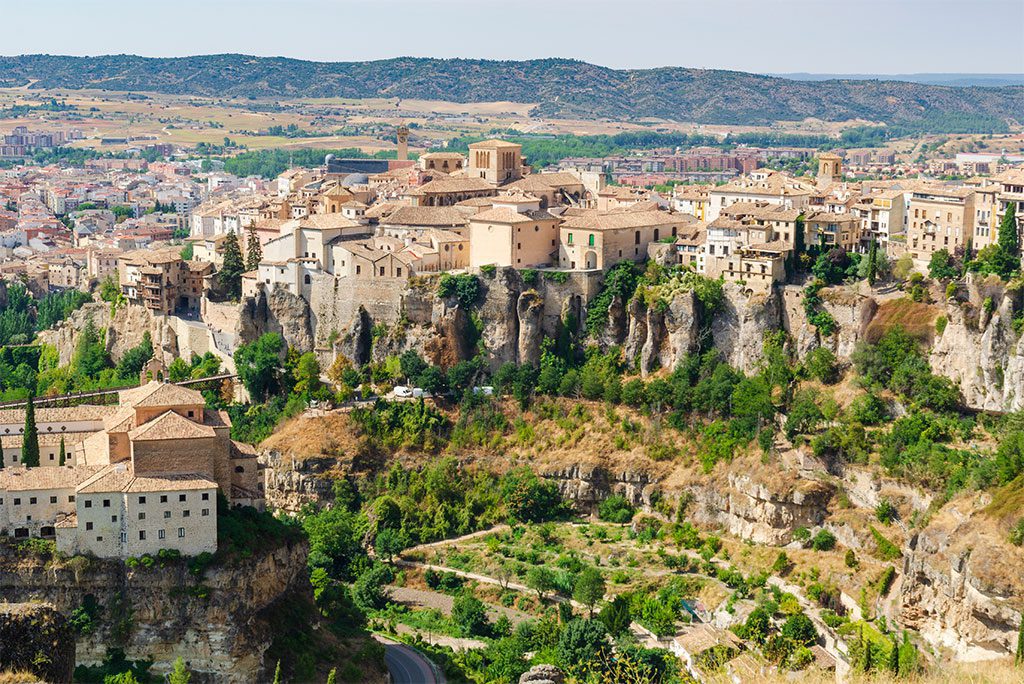
Salamanca, the province’s capital and biggest city, is located on the northern plateau of Spain, along the Tormes River. Florence is one of Europe’s most beautiful Renaissance cities, and its historic centre is full of architectural wonders and historic landmarks that make it a must-see.
In the heart of the city, the Plaza Mayor is a hive of activity, with cafés, bars, and restaurants filling the space. At night, when the tall buildings in the plaza are lit up, the square looks even more impressive.
The New and Old Cathedrals, both of which have spectacular architecture, are only a short distance apart. They’re made of sandstone, much like the rest of the city. As a result, Salamanca is known as La Dorada, or “Golden City,” because of its golden hues.
Salamanca has a vibrant and young vibe because of its high student population, despite the city’s rich past. Salamanca University, one of Europe’s oldest colleges and universities, was established in 1218.
13. Ibiza
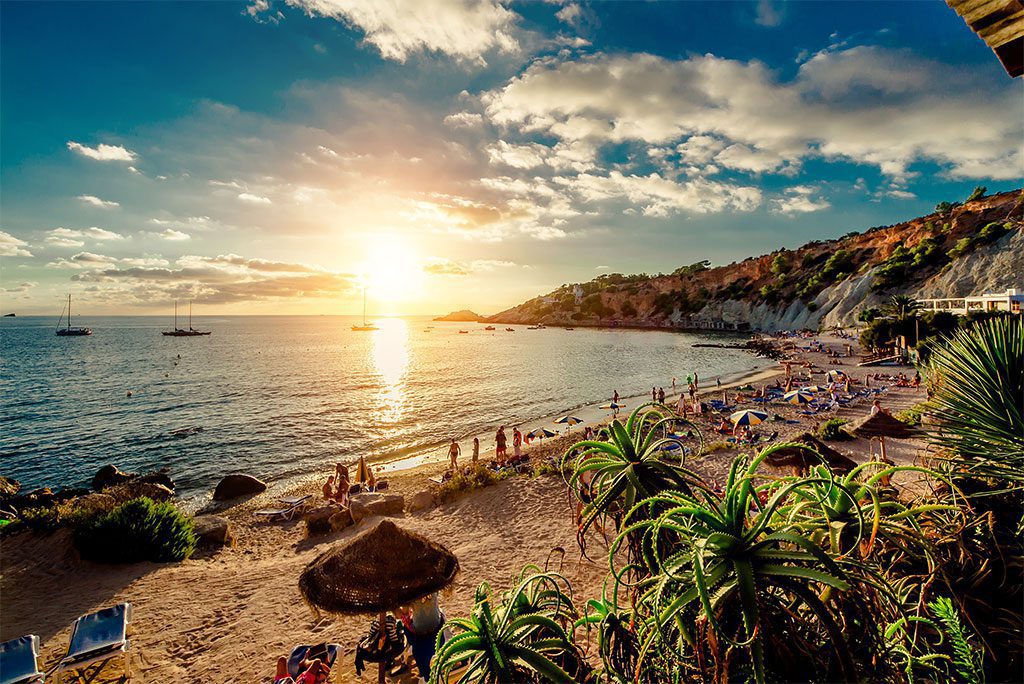
Ibiza is the third largest of the Balearic Islands. It is located off the east coast of Spain, surrounded by the sparkling waters of the Mediterranean. While it is famous for its pounding nightlife and summer club scene, which attract world-renowned DJs to its shores, the island actually has many other different sides.
Ibiza is rocky and rugged, but it is surrounded by beautiful bays and beaches; this, combined with its warm, sunny, and dry climate, makes it an excellent beach vacation destination.The largest city on the island, Ibiza Town, boasts a majestic walled old town perched atop a hill overlooking the sea.
While you can certainly find relaxing rural retreats and sleepy seaside villages on the island, many people visit Ibiza for its incredible party scene and exhilarating electronic dance sets. In summer, its heaving clubs stay open through the night until dawn, when the sun finally rises over the sea.
12. Segovia
With the Sierra de Guadarrama mountains towering above, Segovia is a beautiful location for the capital and biggest city of the province of the same name. With Valladolid and Madrid only a short drive away, its sun-kissed towns sit on the Eresma River in Spain’s Inner Plateau.
For its historical attractions, Segovia is renowned. The Romans constructed the aqueduct of Segovia in the city’s old town in 100 AD. There are a lot of churches, convents, and monasteries in the city, as well as this technical wonder.
The magnificent Alcazar of Segovia, perched on a rocky outcrop above the city, is the city’s other major draw. Walt Disney’s Sleeping Beauty Castle is said to have been inspired by the mediaeval castle and palace.
11. Ronda
El Tajo gorge, in the south of Spain, provides a spectacular view of the valleys and hills that lay before Ronda, which sits on a rocky ridge.
Puente Nuevo, the city’s most recognisable structure, spans the canyon in all directions. It was constructed in 1793. It’s a stunning bridge that joins the contemporary El Mercadillo district with the historic Moorish enclave, El Ciudad, where you’ll find beautiful churches, exquisite palaces, and lovely gardens. The town’s neoclassical bullring, the country’s oldest, is considered the birthplace of modern Spanish bullfighting.
Ronda’s old alleyways have long attracted authors and poets due to the city’s rich cultural legacy and history, as well as its magnificent clifftop position. Ronda has been a prominent tourist destination in Andalusia, attracting visitors such as Ernest Hemingway, James Joyce, and Rainer Maria Rilke at one time or another.
10. Santiago de Compostela
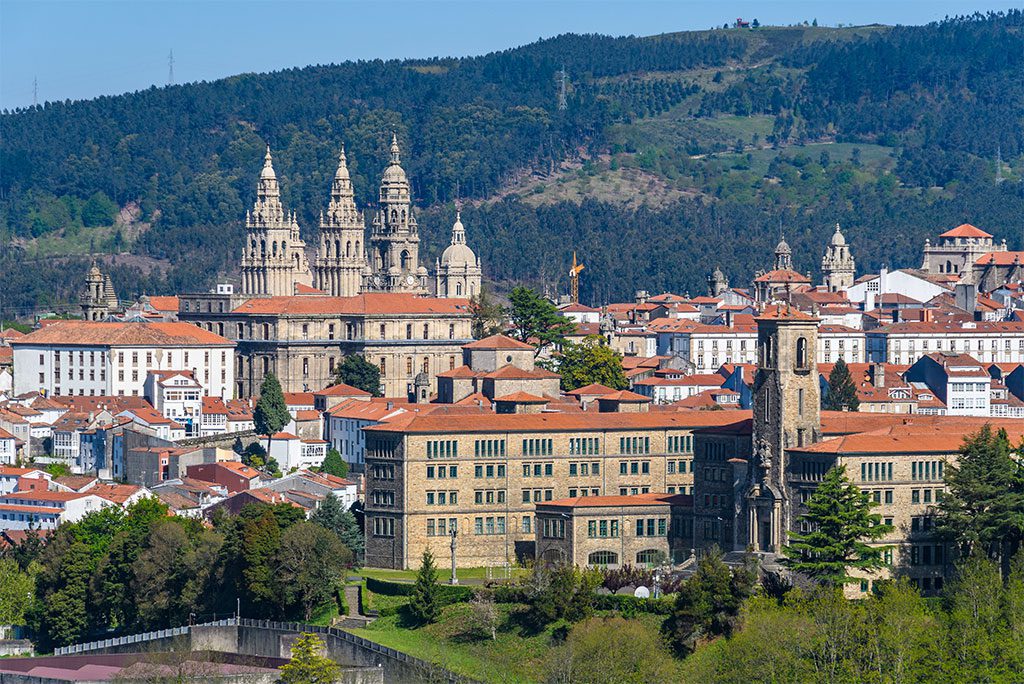
Santiago de Compostela, the capital of Galicia in northwest Spain, is well-known as the endpoint of the traditional Camino de Santiago pilgrimage. This pilgrimage, also known as the Way of St. James, stretches back to Medieval times and is significant to many because it is thought that Santiago de Compostela is where the Apostle of Jesus Christ, St. James, is buried. Tens of thousands of people visit each year because of the city’s rich religious history and history.
The major plaza, Praza do Obradoiro, serves as the starting point for most pilgrims. This lively square is home to several historic sites, including the Santiago Cathedral, which houses the tomb of St. James. Additional landmarks to be found in this area are the Gelmrez and Rajoy palaces, as well as the Catholic King’s Hostal and San Jeronimo College.
The Museum of the Galician People and the Pilgrimage Museum are excellent places to learn more about Galicia’s history and importance as a pilgrimage destination and to see how it has evolved through time.
9. Toledo
Toledo, located in central Spain, served as the capital of Spain until the 16th century, when it was replaced by Madrid. The city is commonly referred to as the “City of Three Cultures” since it was home to Jews, Christians, and Muslims for many years. Toledo’s Roman-era art and architecture have made it a renowned tourist destination ever since.
Getting lost in Toledo’s ancient alleyways and admiring its historic architecture, which includes gorgeous churches, synagogues, mosques, and a wonderful Roman castle, is the ideal way to spend a day in the city. A visit to the Zordocover Square, which has hosted several historic events, is definitely worth the time. It’s possible to take a break from the hustle and bustle of the city and have a cup of coffee while soaking in the sights and sounds. Pre-dinner cocktails and tapas are available at local pubs in the evenings.
In Toledo, the city where El Greco painted his masterpieces, there is a thriving artistic community. Museums and art galleries abound in Toledo, and the Cathedral of Toledo has an outstanding art collection that includes works by painters like Goya, Ralphael, and Titian. El Greco’s works may be seen in many of the city’s churches and other sites.
8. Cordoba
The Andalusian city of Cordoba is the capital of the province of the same name. Small-town charm and big-city attractions are both present in Cordoba, a mid-sized city with a rich history and culture.
Cordoba’s ancient district is a network of mediaeval alleyways, plazas, and whitewashed courtyards, all centred on the Mezquita, the city’s most famous landmark and the oldest in Europe. The Mezquita, once a mosque, has been transformed into a magnificent church while still keeping much of its original design. Córdoba’s mediaeval majesty and stature are reflected in the city’s forest of columns capped with red and white striped arches in the Islamic style. Outside the Mezquita, there is a lovely orange grove where you can sit back and enjoy the scenery.
Additionally, the Fortress of the Christian Monarchs, the Street of Flowers, and the Old Jewish Quarter, with its picturesque restaurants and gift stores, are all worthwhile destinations. In Cordoba, a city that was once a Roman city, there are a lot of Roman-era things that can still be found, like its walls, bridge, amphitheatre, and tomb.
A wide variety of museums, theatres, restaurants, cafés, and bars can be found around the city in a variety of plazas throughout the city. There are two major squares in town, one with a bustling commercial district and the other having ties to Don Quixote by Miguel de Cervantes.
The May Crosses Festival, the Patios Festival, and the Codoba Fair are all taking place in Cordoba during the month of May. As part of these celebrations, the streets of the city are filled with flamenco dancing, Spanish food and drink, and numerous competitions.
7. San Sebastian
As the provincial capital of Gipuzko, San Sebastian may be found off the shore of Biscay Bay in the Basque Country region of northern Spain. This coastal city is known for its beautiful beaches and delicious food.
There are various neighbourhoods in San Sebastian, but it is a tiny, friendly town that is filled with pintxo bars, restaurants, designer stores, and an indoor mall. Historic structures in the city’s Old Town were rebuilt in the 19th century after the Napoleonic Wars, when the city was almost completely devastated.
Some of Europe’s greatest beaches may be found in San Sebastian, including Playa de la Concha, a popular spot for sunbathing, swimming, kayaking, and water skiing. Surfboard and body board rentals are available at Playa de la Zurriola, which is popular with local surfers.
Monte Urgell and Mount Igueldo, two hills above the city, are great for hiking, funicular rides, amusement parks, great monuments, and breathtaking views.
Pintxos are a big draw in San Sebastian, Spain, and the city is known for them. In Spain, pintxos, or tapas, are small bites made with a broad range of fresh ingredients, including vegetables, meats, and fish. Pintxo buffets may be found at several places across the city. It’s a local habit to sample Pintxos and a drink at each tavern along the way.
Throughout the year, the city hosts a variety of festivals and events. Among the most popular events are the Jazz Festival and the San Sebastian Film Festival.
6. Valencia
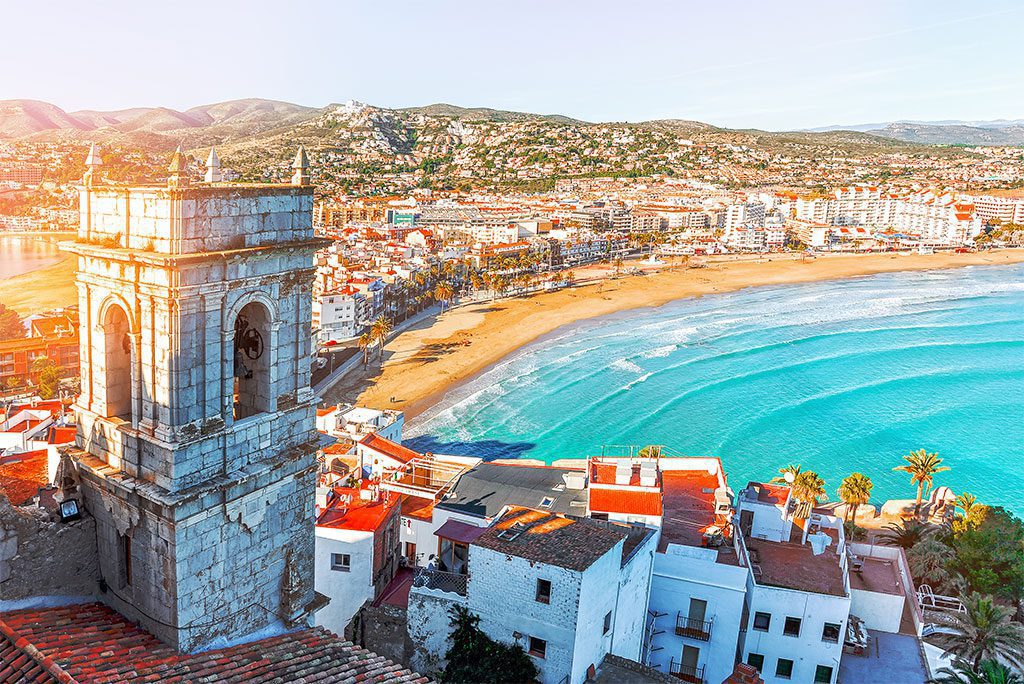
One of the biggest and most significant cities in Spain, Valencia is situated in the eastern section of the nation in the area of Valencia. After many years of substantial building and refurbishment, Valencia nowadays is known for its Fallas Festival and the City of Arts and Sciences architectural wonder.
Many of Valencia’s restored old buildings are monasteries, like San Miguel de los Reyes and the Silk Exchange Market, as well as beautiful cathedrals.
After diverting the Turia River, the city created its most stunning feature, a large cultural and entertainment complex known as the City of Arts and Science. Each of these structures is a work of art in and of itself, including a science museum, planetarium, aquarium, an arts museum, and an IMAX cinema. Also incorporated into the ancient Turia riverbed are lovely gardens, sports parks, and artificial lakes.
Barri del Carme, Valencia’s most popular district, is home to an eclectic combination of architecture, a varied population of ethnicities, up-and-coming stores, and sidewalk cafés.
A week-long papier-mâché figure show takes place every March at Valencia’s Fallas Festival, which is held in neighbourhoods all throughout the city. The “fallas” are ceremoniously burnt at the conclusion of the week, and the villages celebrate into the small hours of the morning. However, Valencia isn’t only a party town in March. Every area in the city is alive at night with pubs and nightclubs.
5. Seville
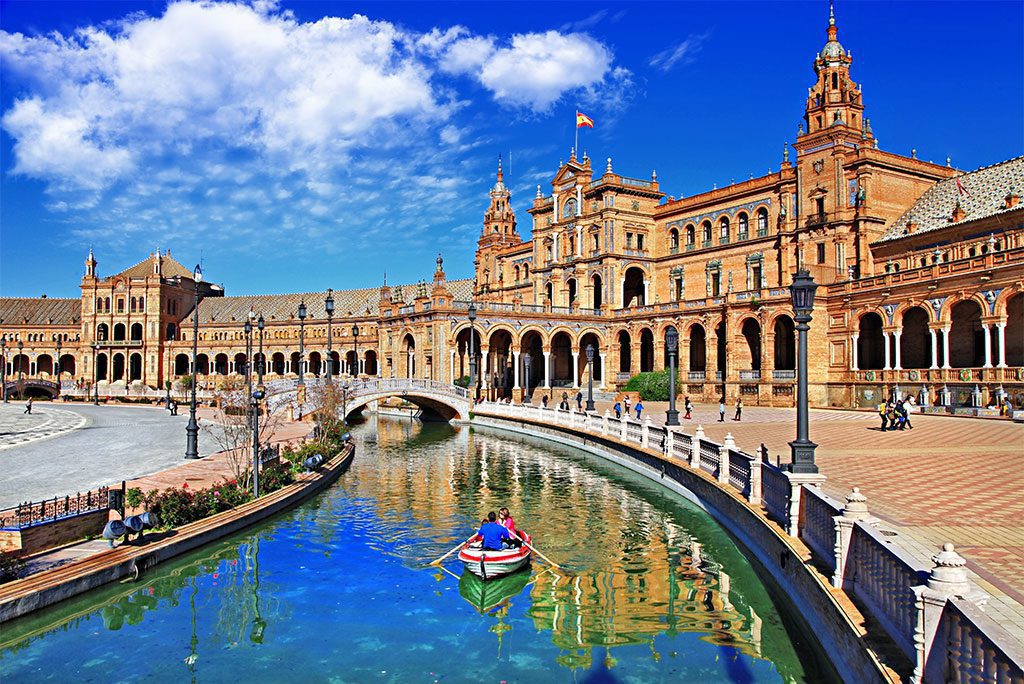
Seville is the main tourist destination in southern Spain because of its world-class attractions, exciting festivals, and electrifying nightlife. While Seville is Andalusia’s capital city, it is also the region’s economic and cultural centre.
The magnificent Cathedral of Seville, said to be the last resting place of Christopher Columbus, is the crowning glory of Seville’s ancient attractions. A beautiful Moorish castle with lush gardens and where Christopher Columbus planned his trip to the New World is another important building.
The Metropol Parasol, the world’s biggest wooden structure, is located in the heart of the city and houses the city’s major market.
Seville, the cultural epicentre of the area, is home to a bevvy of museums, galleries, and other leisure options. There is a plethora of pubs, clubs, and flamenco dance venues in Seville after the sun goes down.
4. Madrid
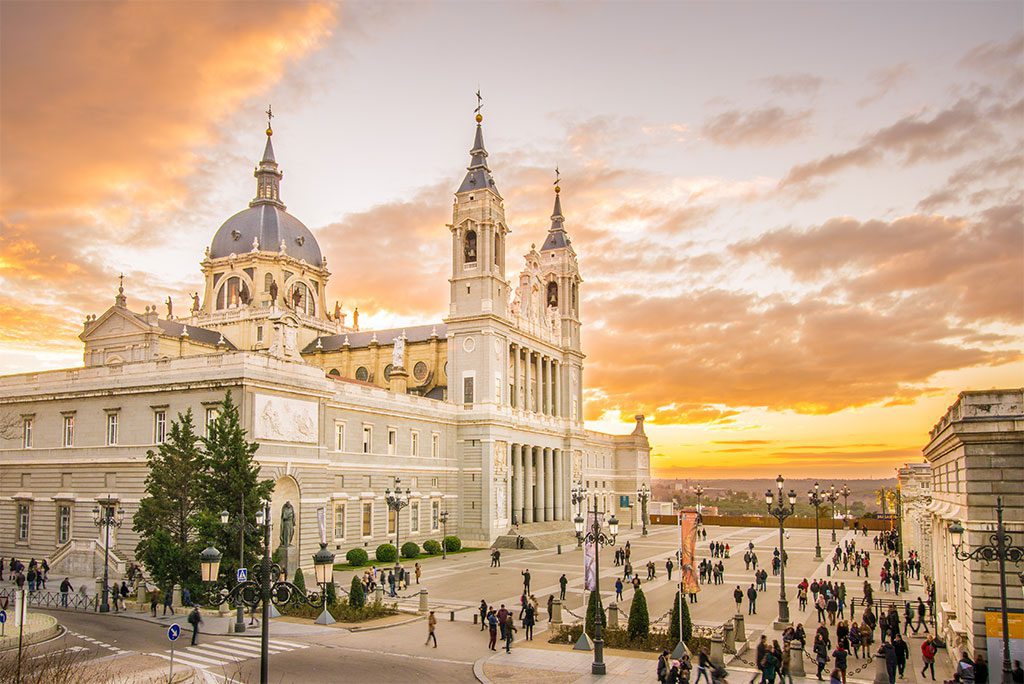
It’s no secret that the vibrant nightlife in Madrid, Spain’s capital and biggest city, is second to none. One of Europe’s most vibrant cosmopolitan towns, the city is home to a number of prestigious colleges.
Madrid is a stunning metropolis with a unique blend of historic and contemporary buildings. Historic quarters, elderly-age settlements, academic regions, ethnic districts, and party scenes are just a few of the many neighbourhoods that make up the capital.
At its heart is Puerta del Sol, a vast plaza that hosts festivals, notable events, and street performers, as well as a major transit hub. Plaza Mayor, home to the bustling San Miguel Market and a slew of tourist stores and cafés.
Most of Madrid’s top tourist attractions, including the Royal Palace, the official residence of Spain’s king, as well as a slew of magnificent cathedrals and ancient sites, can be found in the city’s central district. Beautiful parks and zoos in Madrid, as well as football games, museums, art galleries, and concerts, are just a few of the numerous things to see and do in Madrid.
3. Mallorca
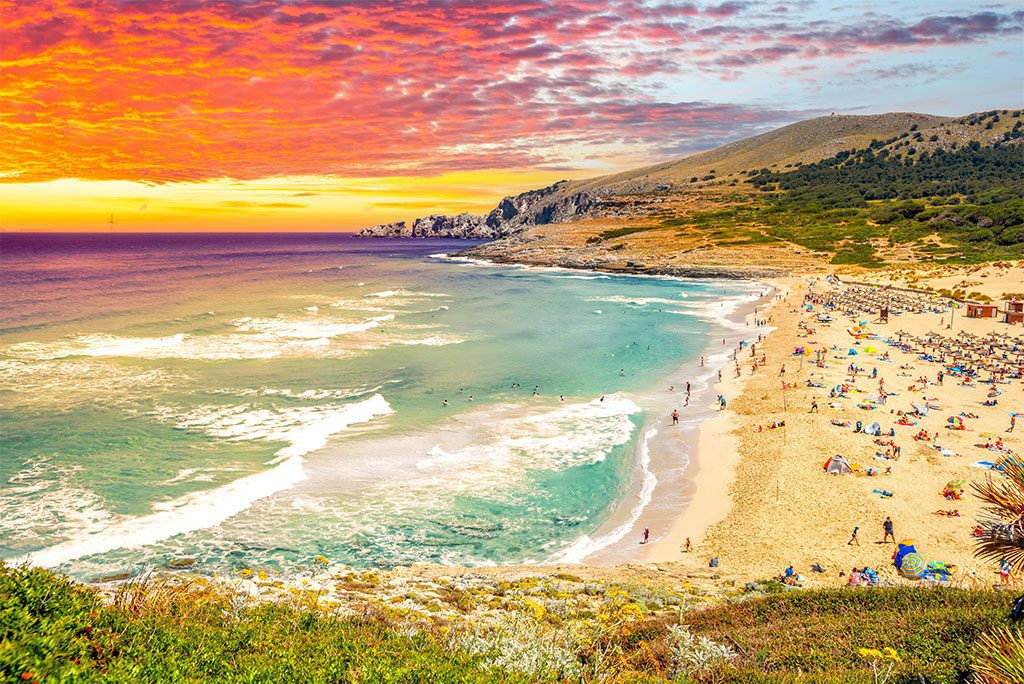
The largest of Spain’s Balearic Islands, Mallorca is surrounded by the sparkling waters of the Mediterranean, with jagged cliffs, secluded coves, and beautiful beaches lining its shores. People have been coming to the island for a long time because it has a warm and welcoming climate as well as a lot of beautiful scenery.
While its mountainous interior is home to ancient hilltop monasteries and sleepy villages, its spectacular coastline is dotted with seaside towns and resorts. Sunbathing, swimming, and watersports are all popular pastimes, with delicious local cuisine and seafood on offer wherever you go.
The island’s main city and capital is Palma de Mallorca. There is a beautiful old town for visitors to explore, with winding, narrow streets and centuries-old buildings beneath its exquisite Gothic cathedral. The pretty town of Soller is also worth visiting for its scenic, secluded setting, as is the charming mountain village of Valldemossa.
2. Barcelona
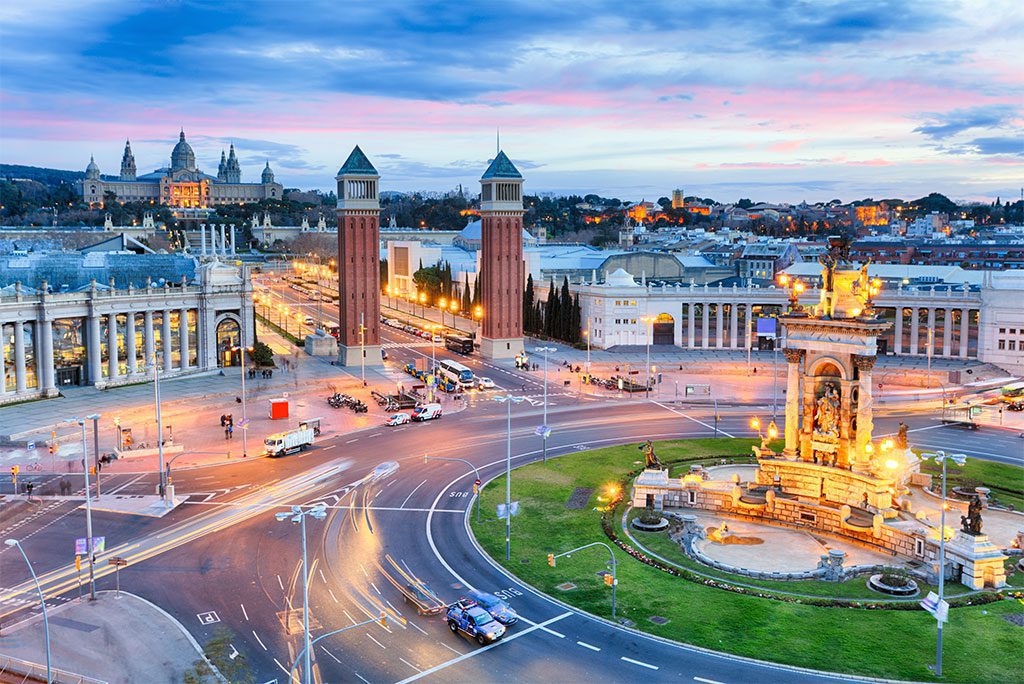
Barcelona is one of Spain’s best-known places to visit. It’s in northeastern Spain and has a lot to offer visitors, from ancient architecture, vibrant culture, and bustling nightlife, to the best of both.
Barcelona’s biggest draw is Ciutat Vella, or the Old City. Visit the Gothic Quarter, which is home to stunning, historic churches and Roman remains, as well as cobblestone alleys dotted with cafés and restaurants open to the public during the warmer months.
La Placa Catalunya is a famous meeting place and transit hub, surrounded by monuments and fountains. People love to visit La Rambla, a tree-lined pedestrian street, and Barceloneta, one of Barcelona’s best-known beaches, when they visit the city.
The Sagrada Familia and the Casa Batllo, two of Antoni Gaudi’s most renowned works, are both located in Barcelona. In each of these remarkable constructions, the patterns, forms, and colours come together in a unique way.
There are several museums, art galleries, theatres, and flamenco events in Barcelona since it is a significant cultural hub. Monegros Desert Festival is one of the major electronic music events in Spain and is held in the city. The Nou Camp, the world’s biggest football stadium, is located in Barcelona, which has a long history of sports fandom.
Montserrat, one of Barcelona’s most popular tourist attractions, is located just outside the city. It is possible to get to Montserrat by cable car, rail, or trekking. There are hidden caverns and an underground lake.
1. Granada
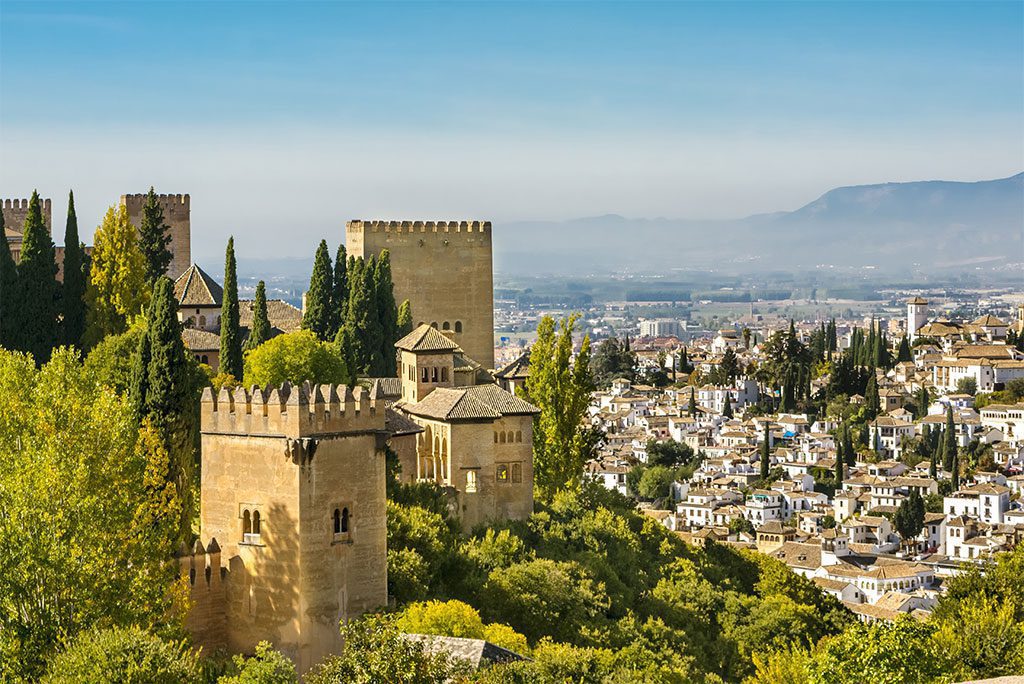
Located at the base of the Sierra Nevada mountains in southern Spain, Granada is the capital of the Granada province. A mid-sized city, Granada offers a perfect blend of spectacular attractions, traditional culture and an animated nightlife. But most of all, it is the home of the Alhambra, a pinnacle of Moorish art that encapsulates Andalusian history and is one of the great architectural sights of Europe.
Attesting to the city’s eventful history are its most notable landmarks: the 16th-century Granada Cathedral, with its magnificent domed ceiling, and the famous Alhambra, a grand Moorish palace with luxurious gardens and Arab baths.
Granada’s juxtaposing neighborhoods, Sacromonte and Albaicin, are the essence of the city’s culture. Noted for its Christian abbey, Sacromonte is where tourists come to see how gipsies have traditionally lived in various cave dwellings and to watch live flamenco and zambra dances.
Located at the base of the Sierra Nevada mountains in southern Spain, Granada is the capital of the Granada province. A mid-sized city, Granada offers a perfect blend of spectacular attractions, traditional culture, and an animated nightlife. And it’s most famous for its Alhambra, which is one of the best examples of Moorish art. It’s also one of the best examples of European architecture.
Historic landmarks in Granada show that it has been through a lot in its long history. The 16th-century Cathedral of Granada has a beautiful domed ceiling and is home to the Alhambra, a grand Moorish palace with beautiful gardens and Arab baths.
Granada’s juxtaposing neighborhoods, Sacromonte and Albaicin, are the essence of the city’s culture. Tourists come to Sacromonte to see how gipsies have lived in cave dwellings and to see live flamenco and zambra dances. Sacromonte is known for its Christian abbey.


